There are vintage-inspired watches that try really hard to ape the look of the historical model that they’re re-creating for a modern audience, and there are those that strive instead to channel that original model’s essence as a base with which to build new complications upon. Jaeger-LeCoultre’s Polaris Chronograph — one of the standout models from the recently launched Polaris collection, inspired by the classic Memovox Polaris divers’ alarm watch from 1968 — is emphatically among the latter. I had a chance to wear and review the steel-cased, blue-dialed version of the watch shortly after its U.S. debut. Here is a rundown of what it offers.
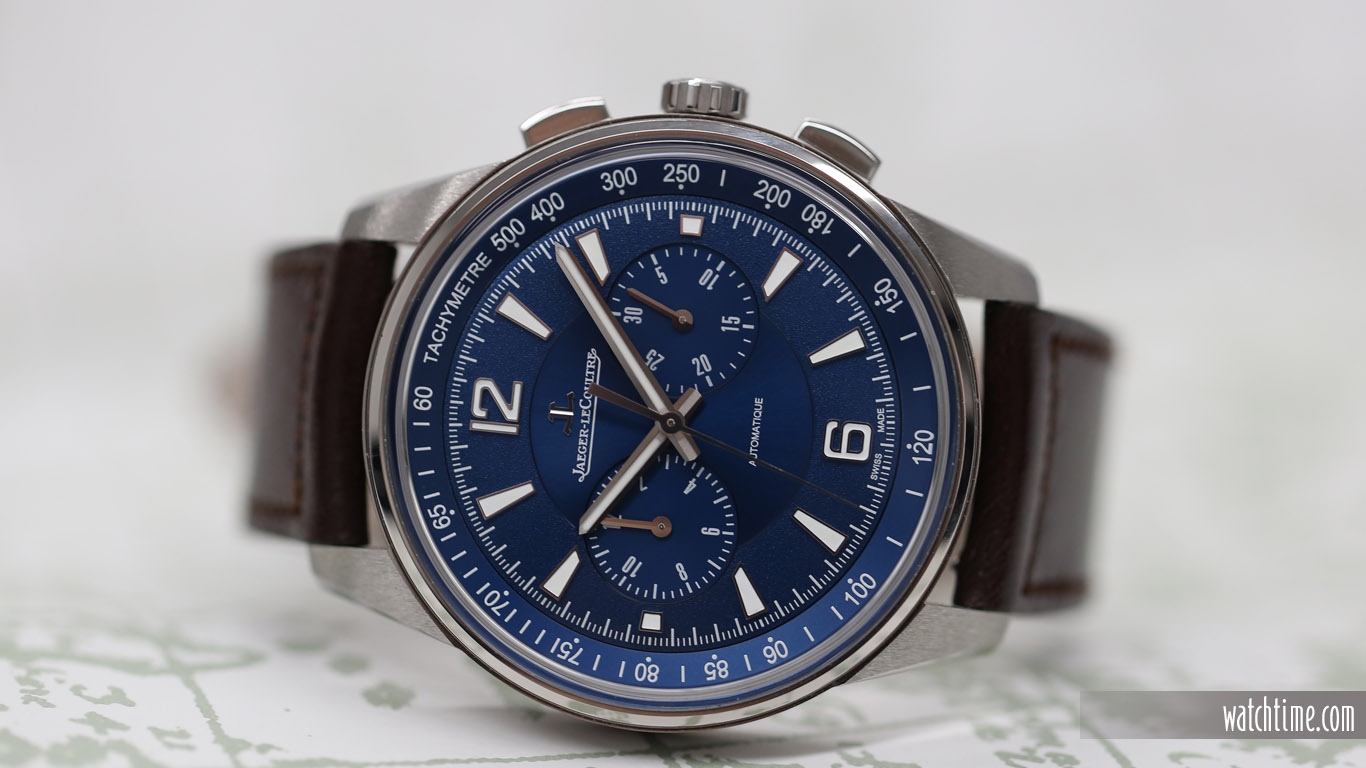
The case:
As far as the chassis goes, Jaeger-LeCoultre has opted to re-create the contours of this watch’s 1968 predecessor to a fair degree of historical accuracy, albeit in a more contemporary size, more luxurious style of finishing, and with the addition of several elements not present in the vintage piece. At 42 mm in diameter and a svelte 11.9 mm thick, the stainless steel case features predominantly satin finishing, with subtle areas of polished finishing on the beveled flanks of the curving lugs; on the thin, edged bezel; and on the surfaces of the curved rectangular pushers and small, notched crown. The pushers are pleasantly ergonomic — starting, stopping, and zeroing the stopwatch with a mildly forceful press of a fingertip — and the crown is topped off by a tiny “JL” logo in relief.
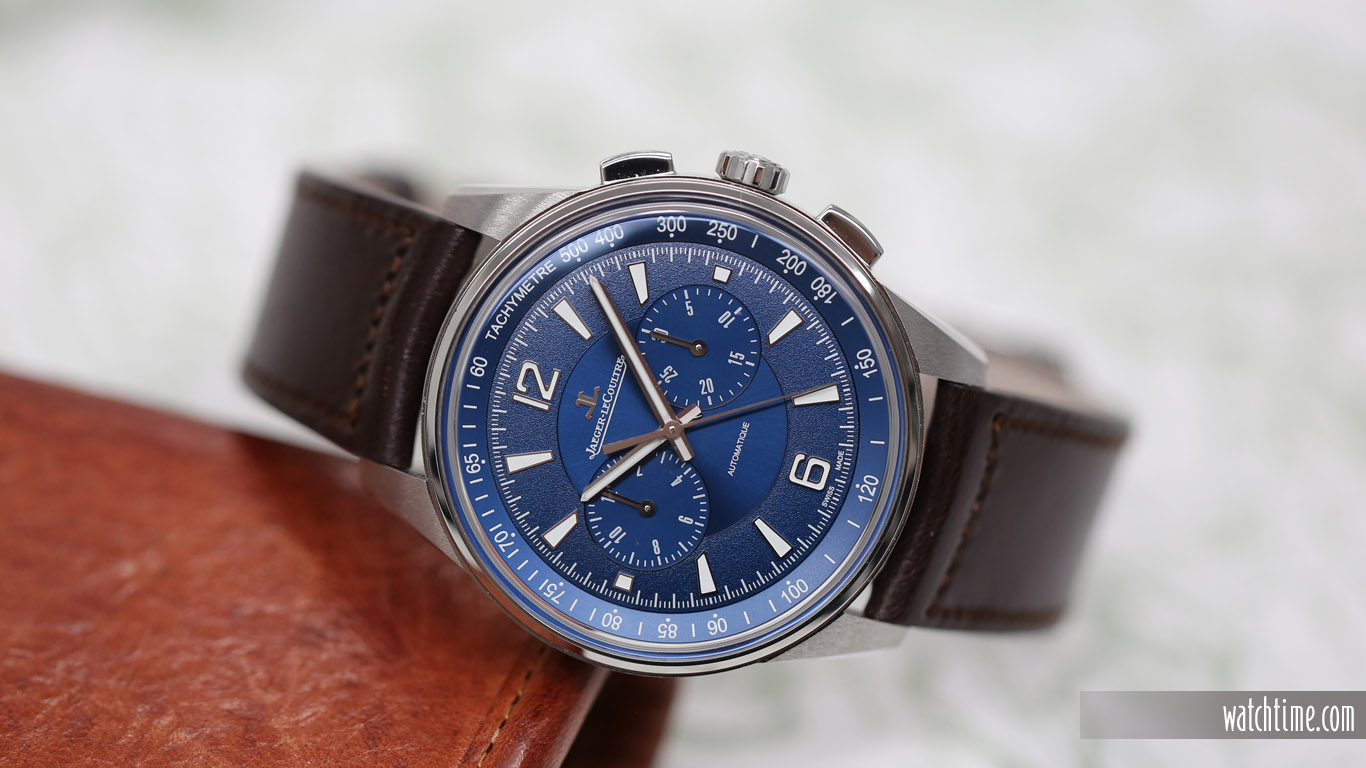
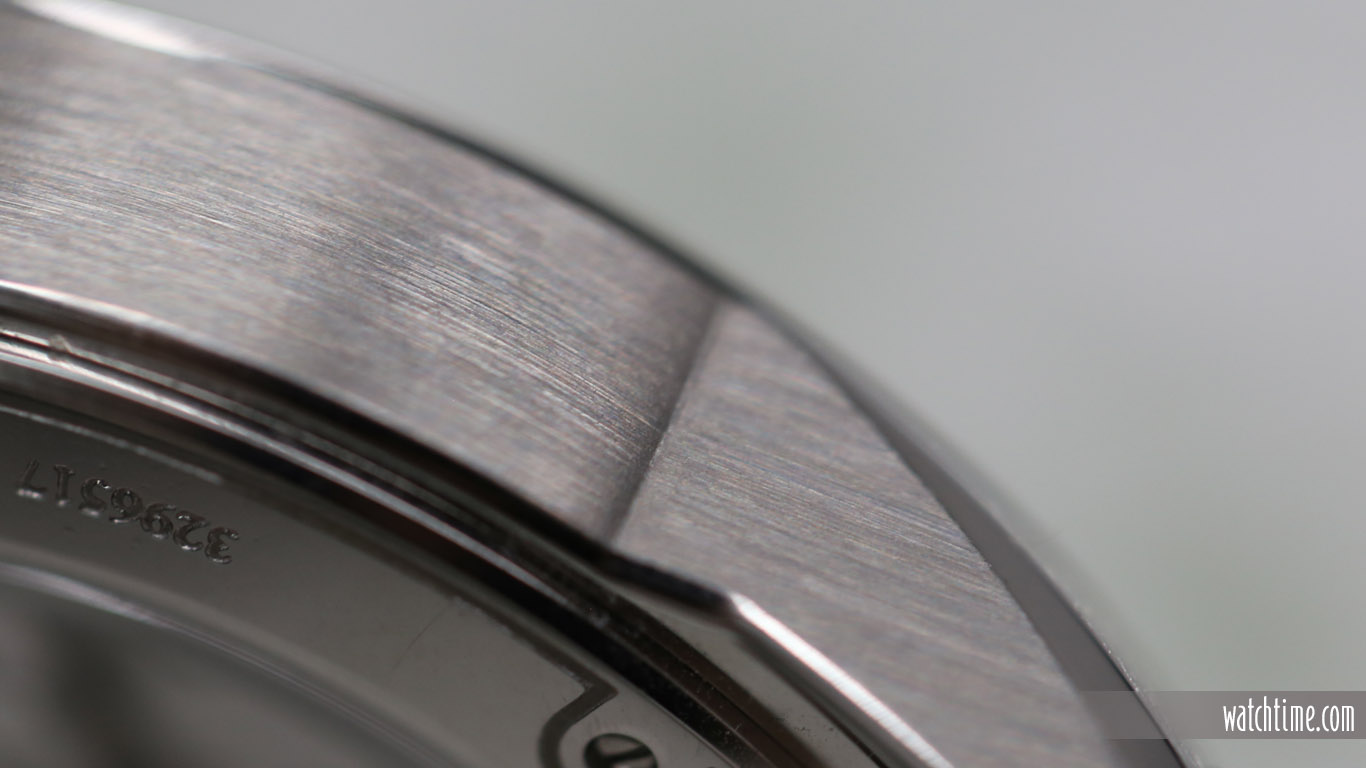
The presence of the chronograph pushers — in addition to their functional necessity, of course — is a nod to the unconventional three-crown design of the original Memovox Polaris, in which one crown wound the movement and the other two were used to set, wind, and start or stop the mechanical alarm, which used a crown-operated inner rotating bezel flange with a 60-minute scale. Of course, this watch is equipped with neither an alarm nor an inner rotating flange, so this design is more an aesthetic homage than a modernized version of the original technology.
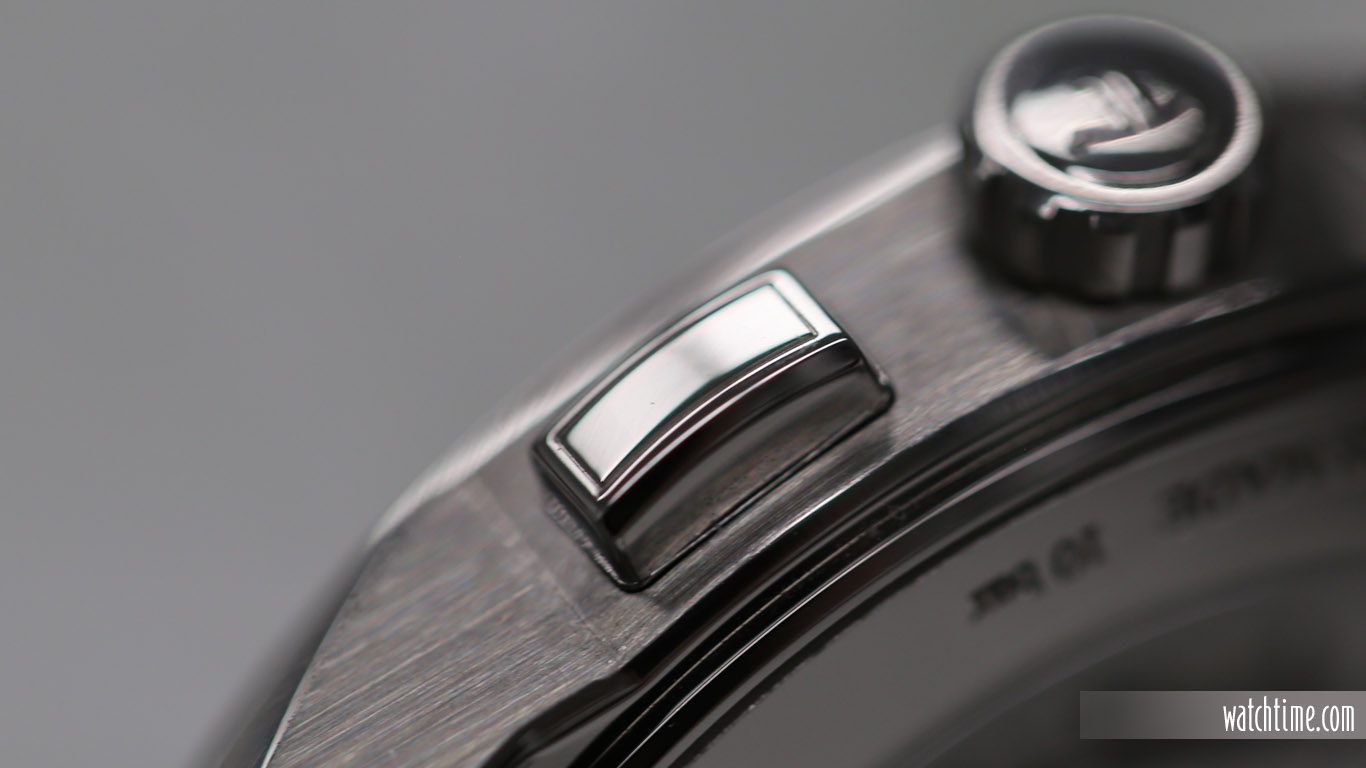
The dial:
The new Polaris collection is also unified by several elements that call back to the 1968 underwater alarm watch that inspired it. Each dial consists of three concentric circles with contrasting finishes: sunray in the center, graining on the outer circle, with its vintage-inspired Arabic numerals, white hashmarks, and variously shaped indices, and opaline for the inner bezel flange — which is, again, stationary here rather than rotating, and inscribed with a very sporty, auto-racing-inspired tachymeter scale rather than a 60-minute alarm-setting scale. Many of these aesthetic elements are, of course, an extension of Jaeger-LeCoultre’s limited-edition “Tribute to Polaris” model from 2008, whose success undoubtedly helped inspire Jaeger-LeCoultre to build this new collection. The effect is handsome indeed, adding a sense of both refinement and depth to a dial that already benefits from that soothing “Ocean Blue” color and the two symmetrically oriented, snailed subdials at 3 o’clock and 9 o’clock.
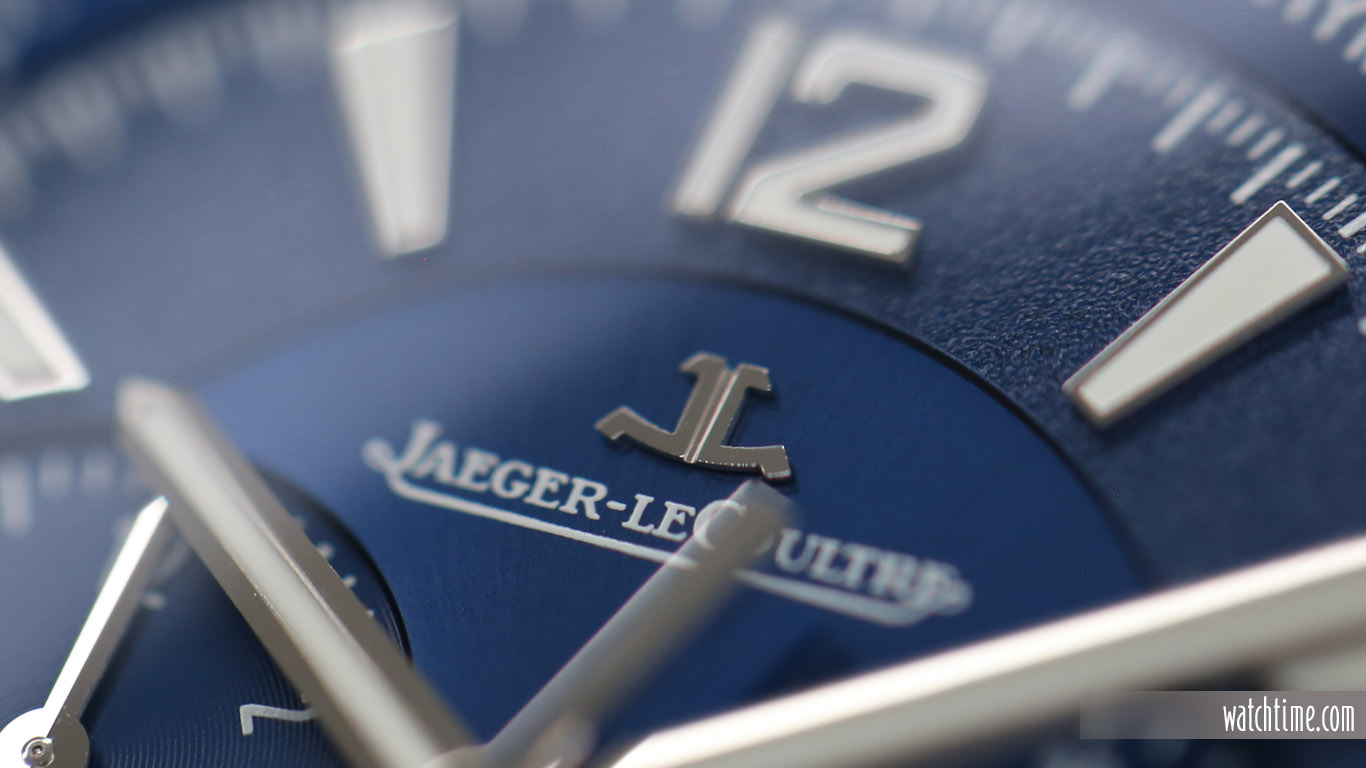
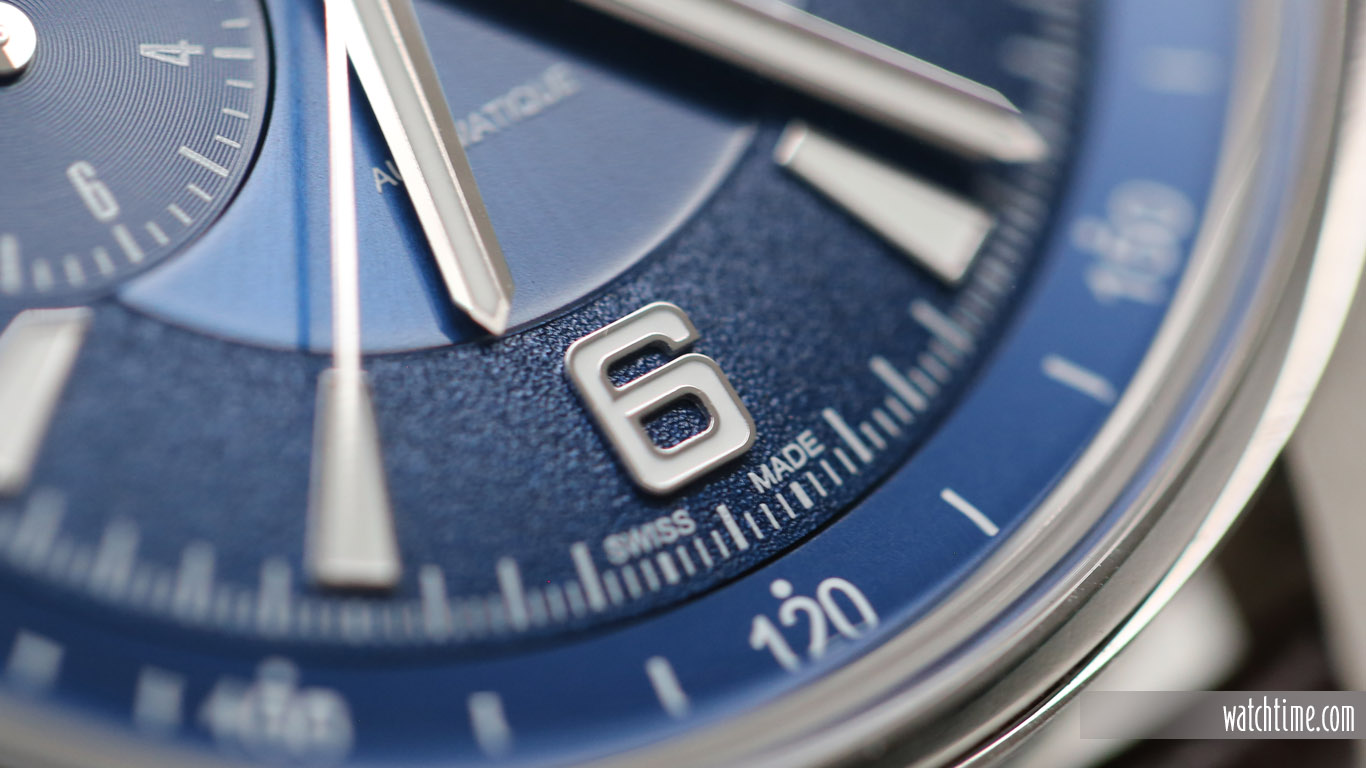
The hands on the classical and harmoniously balanced dial are large and luminous-coated, and the trapezoidal shapes used for the indices echo those on the original Polaris. Also of note, and perhaps another nod to the tool-watch ethos of this watch’s historical base model, the wearer will note that the watch has neither any display for the running seconds nor any indication of the date. The subdials are both chronograph counters (30 minutes tallied at 3 o’clock and 12 hours at 9 o’clock) and the long, tapering central seconds hand remains standing at attention, its tip poised at 12 o’clock, until the chronograph is engaged. The absence of a date will not be missed by many, and of course, makes re-setting the watch easier if you happen to leave it idle for a while.
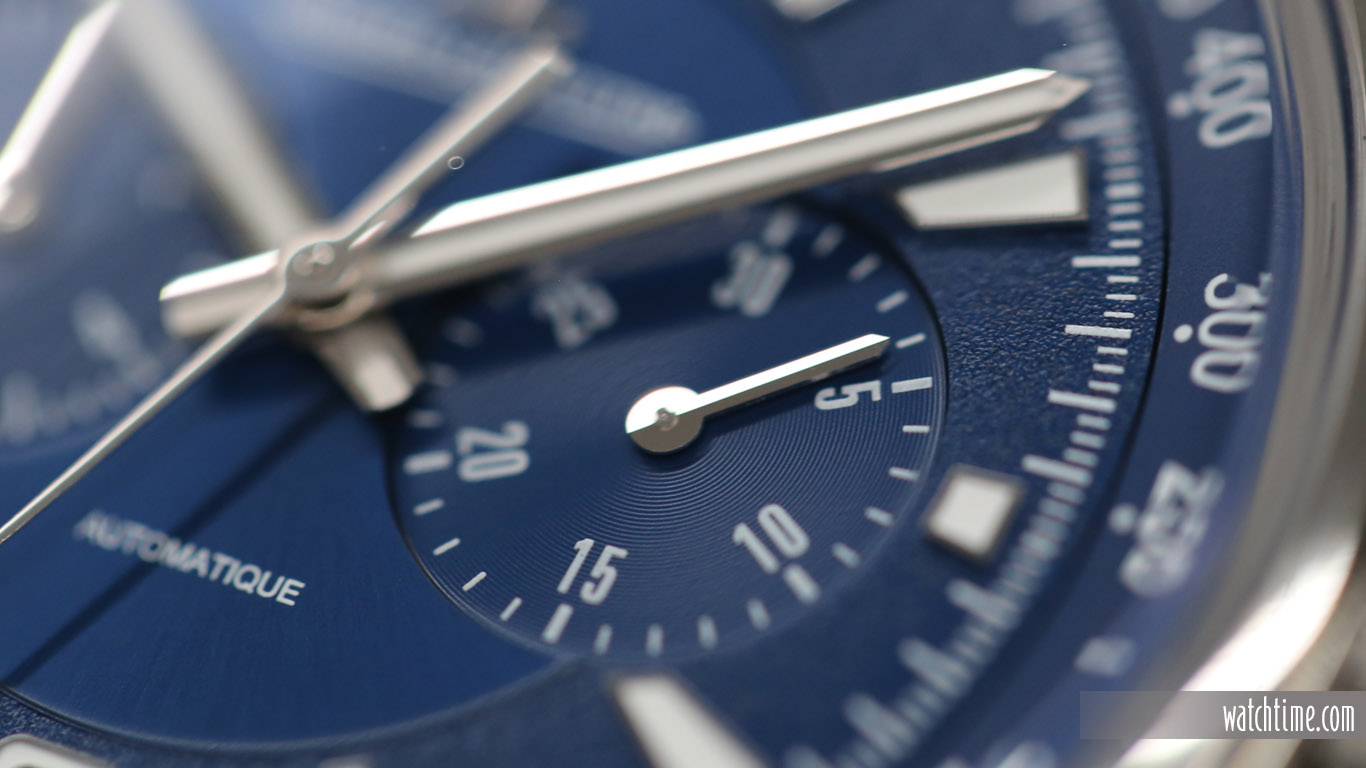
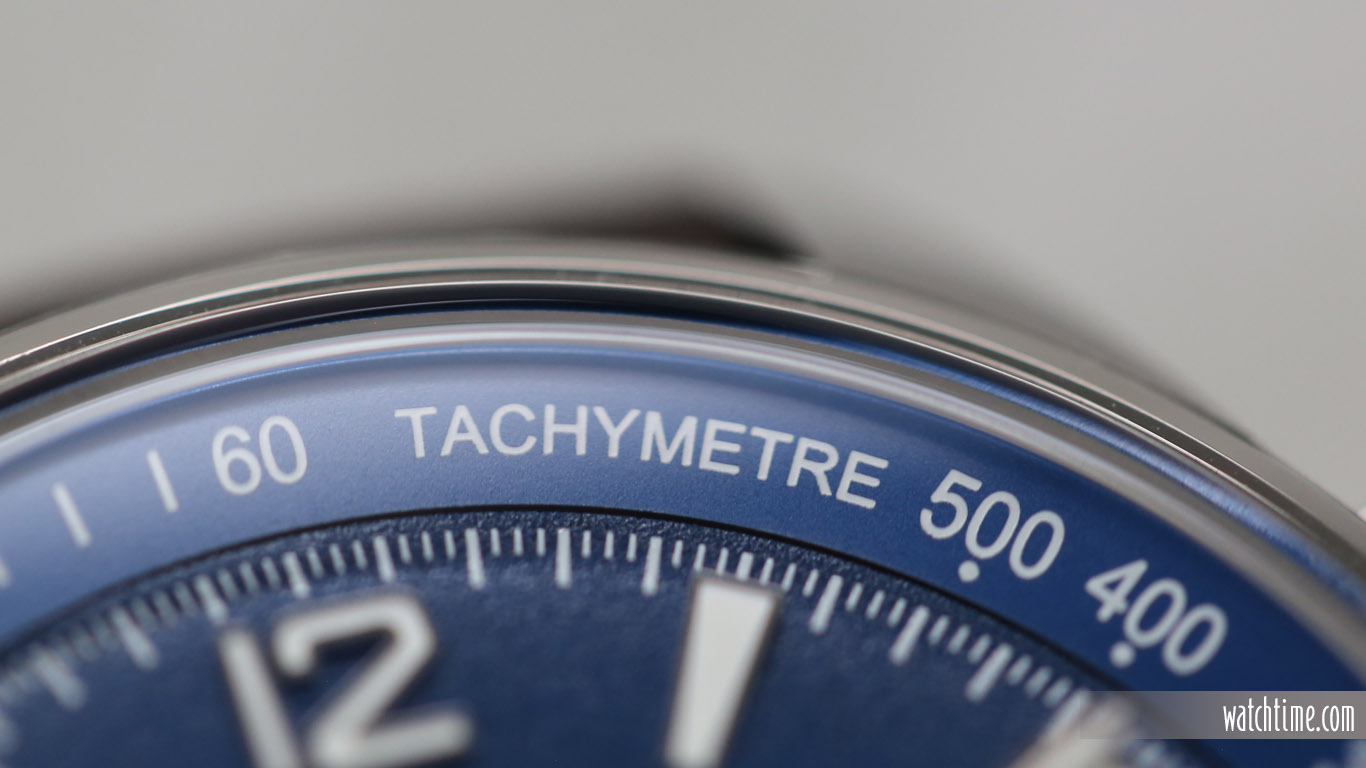
The movement:
At this point, perhaps you’re asking, “So just how long could I leave this watch idle, in theory, without needing to reset and re-wind it?” That brings us to the movement, Jaeger-LeCoultre’s self-winding manufacture Caliber 751, which is visible through a sapphire pane in the caseback that is fastened by four visible screws. Composed of 262 components, including 37 jewels, its balance beats at a brisk 28,800-vph frequency and its integrated chronograph function is controlled by a column wheel with a vertical clutch. The emblematic openworked rotor, with its shaped “JL” in the center and its attractively applied anthracite coating and côtes de Genève finish, swings in both directions to supply the two mainspring barrels with 65 hours, or nearly three days’ worth, or running autonomy — thus answering the hypothetical question posed at the top of this section. Geneva waves also make their presence felt on the bridges and plates, whose edges are beveled and which are dotted with classically blued screws.
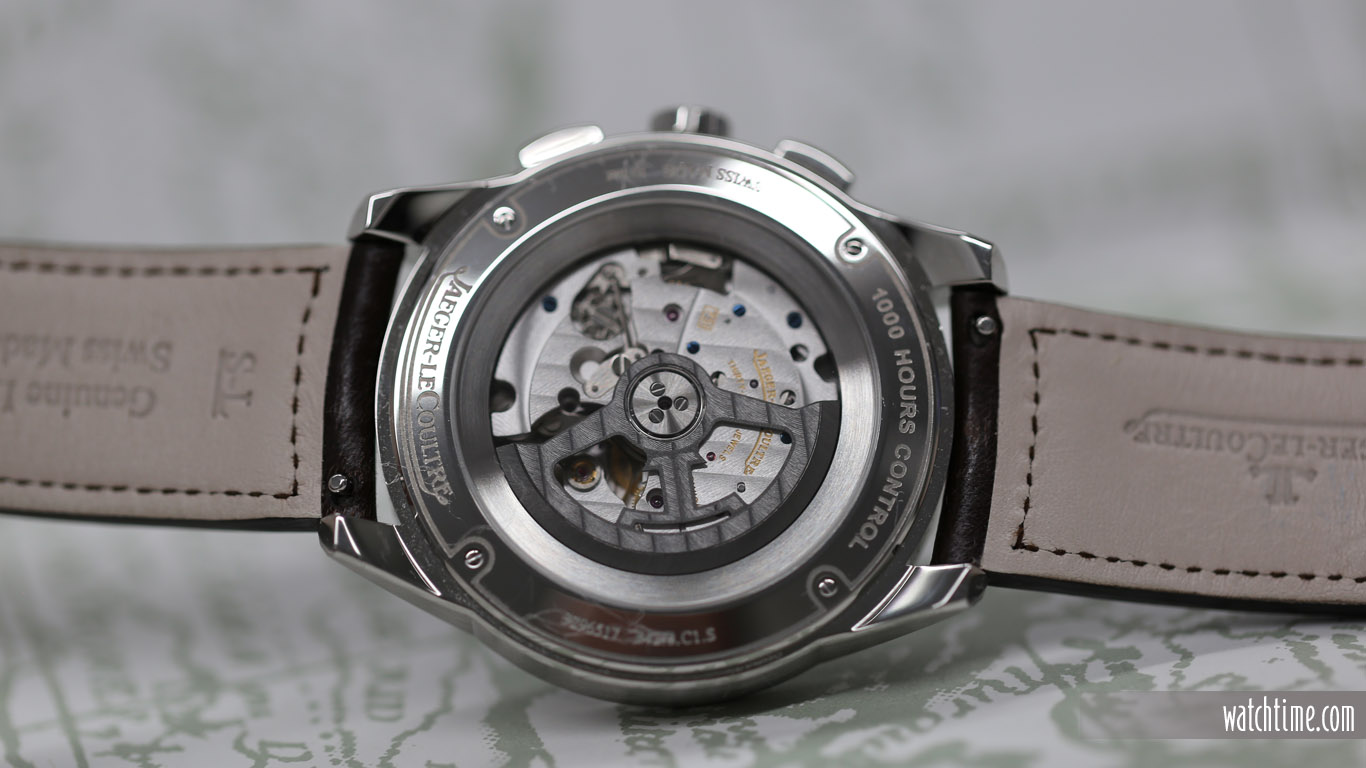
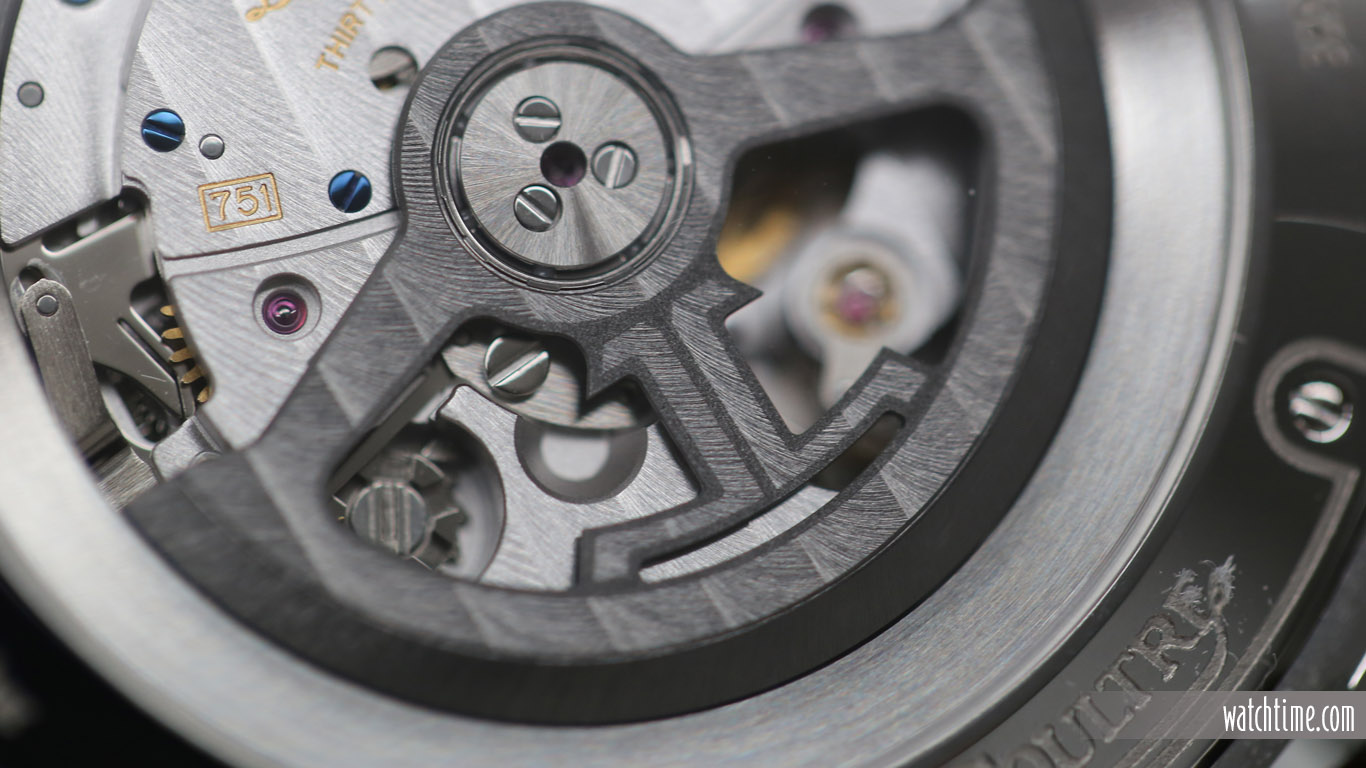
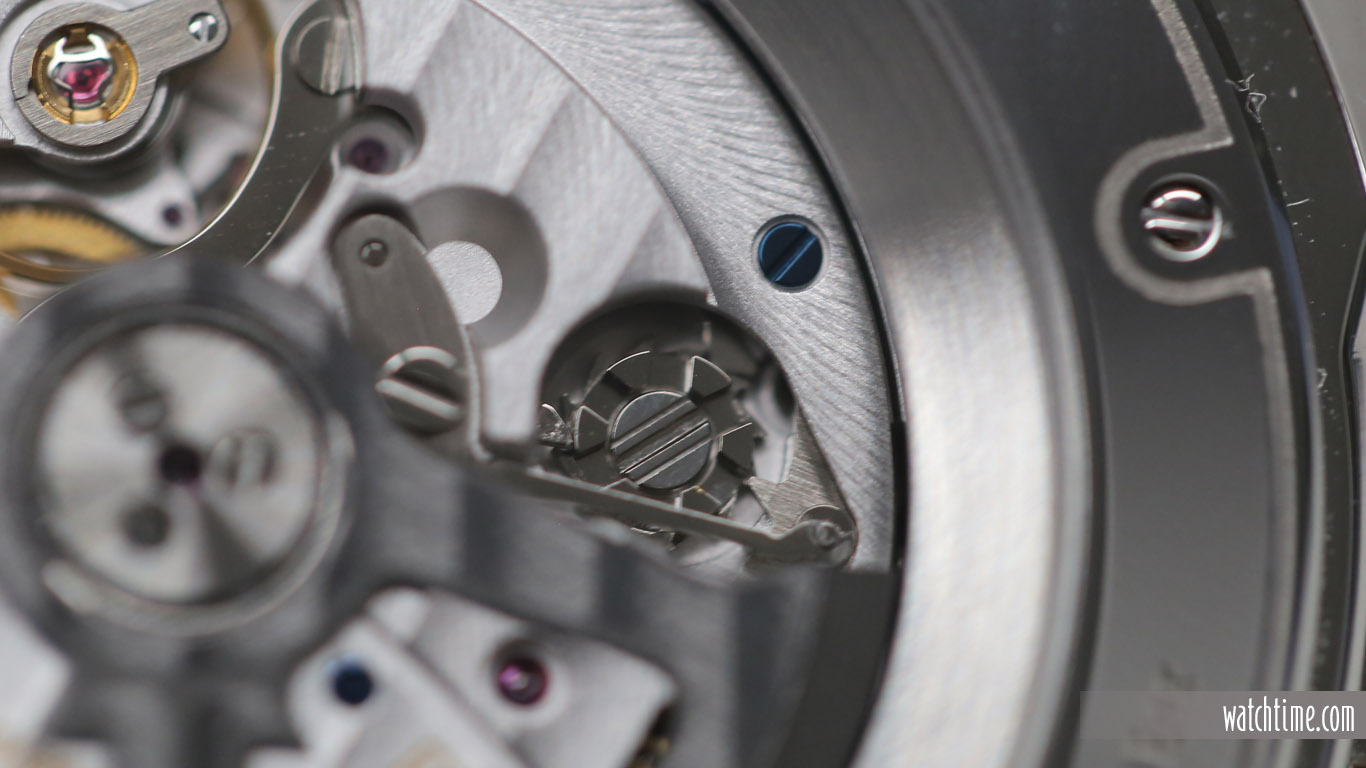
The strap and clasp:
Finally, this Polaris Chronograph, a timepiece that has evolved from a vintage sports watch, is attached to a strap that is both suitably sporty and appealingly “aged.” The dark brown calf leather strap with tone-on-tone stitching has been treated with a faux patina that imparts an almost timeless historical sheen — not to mention the fact that it is supple, not stiff, and thus instantly comfortable to wear. The secure double-folding steel closure, graced with alternating satin and polished areas and relief logo form, also adds to the comfort, anchoring the timepiece snugly to the wrist. There is also a version with a steel bracelet, which is attractive but perhaps pulls off the vintage-inspired look not quite as successfully.
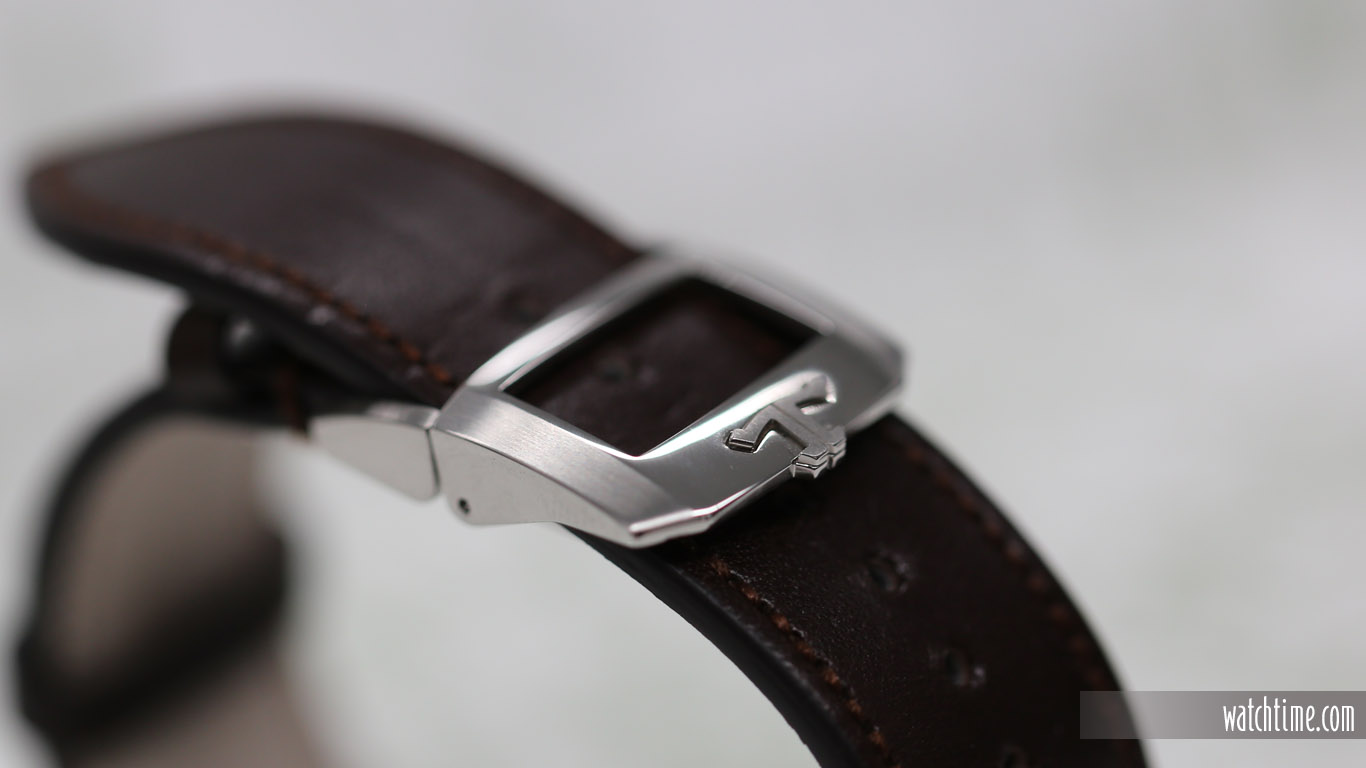
Is the Jaeger-LeCoultre Polaris Chronograph likely to fool anyone into thinking it is of vintage provenance, in the manner of some other, more period-appropriate-looking members of this new timepiece family? Probably not. Is it instantly and intuitively recognizable as a modern, luxurious Jaeger-LeCoultre watch despite some of its sportier elements? Most likely. Will that striking blue dial with its layers of meticulous finishing draw some admiring stares? Most definitely. At $9,750 retail, does it represent a fair value? Everything is relative, but most signs point to yes.



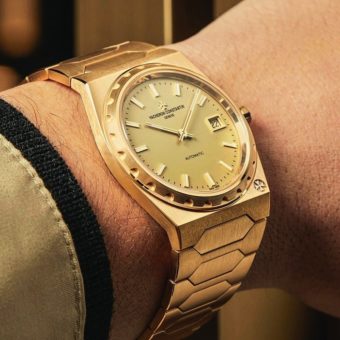
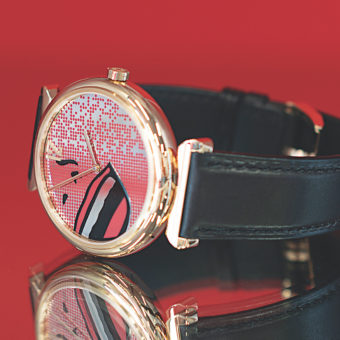
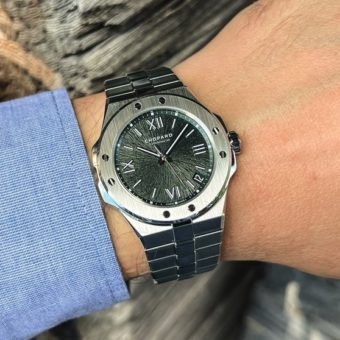

Issued in a limited edition of 1,000 pieces, this model features the special alarm function made famous by the 1968 Memovox Polaris watch. This h anniversary timepiece has an iconic three-crown design: one for setting the alarm (top), one for the inner rotating bezel (middle) and one for setting the time (bottom). The vintage cues on the dial call to mind the 1968 original vanilla Super-LumiNovaTM*, trapezoidal indices mixed with four Arabic numbers – and the triangle in the dial center serving as the alarm indicator. Controlled by the alarm crown, the central disc turns to line up the triangle with the desired alarm time. The Jaeger-LeCoultre Calibre 956 features the striking mechanism with a gong, along with the central seconds and instant-jump date-change system. This caliber is a direct descendant of the first automatic alarm watch movement created by Jaeger-LeCoultre in the 19. Constantly improved, it still represents the ultimate in accuracy, robustness and reliability. This is a rare example of a movement that has been in production for more than 60 years after its creation, continuously updated and modernized.
Is it just me or does the movement look all scratched up by that lever on the left of the first movement pic and the column wheel arm in the second? Maybe just a test movement for the review? Seems odd that the highly polished levers or control arms would have any scratches at all on a caliber of this, well, caliber
I just picked up the automatic version of this watch. It’s running about +5 seconds per day. The watch is finely finished and great looking. I love it.
What is the water resistance rating?
100 meters
Is the new Polaris Chronograph chronometer grade? I see no mention of this on the dial or movement. How accurate is it both during time-telling and time-recording?
It is very unfortunate that most luxury watch producers don’t consider good timekeeping a priority. Many very expensive movements are not even adjusted to five positions and will never keep time like the latest Rolex,Omega or Patek timepieces.In most cases the factories will allow for no better than a 10sec/day deviations. They also don’t stress water resistance in anything but Sport or Diving watches.
Do you wonder why Rolex is so successful? Probably because they combine more of what most people want in all their Oyster cased models. What good is a beautifully finished watch that keeps poor time and must be repaired only by the manufacturer who wants over a $1000.00 to do the most minor repairs. In many cases these over $10,000 watches won’t hold substantial value 10 years later when the style is discontinued and hardly recognizable. These manufacturers must keep up or they will be history sooner than they think now that fewer kids are wearing watches.
Rolex, Omega and Patek. Sure. And GO, GS and CFB I can tell you. And probably many others I do not own..
Remedy:
Purchase Longines watches. I have several Longines watches around ten years old that still run perfect. Non of my Longines have ever needed repair! Longines is still a great brand priced at realistic prices that most watch affectionados can afford.
This JLC undergoes more rigorous testing than required for COSC certification.
Jaeger-LeCoultre do not submit their movements to COSC for chronometer certification hence they are not allowed to use the word “chronometer” on their watches. Instead, they have their internal “1000 Hour Test” which most of their watches are subjected to. To my knowledge, they have not divulged details of their test procedures nor the tolerances, but their web site states the following: “When launching a new watch model, a tailored certification program is carried out to confirm the watch’s correct design for its everyday use. Depending on the character of the timepiece (sport, classic, evening) the certification includes chronometric testing, fall resistance, climatic hazard resistance, waterproofing and accelerated aging of the watch and its strap.”
In my experience, they are well within chronometer tolerances in daily wear (I don’t test all the various positions, so it’s possible they fall outside of COSC tolerances in some positions or the deviations between positions may be too great, but I don’t really care as long as the daily averages are good).